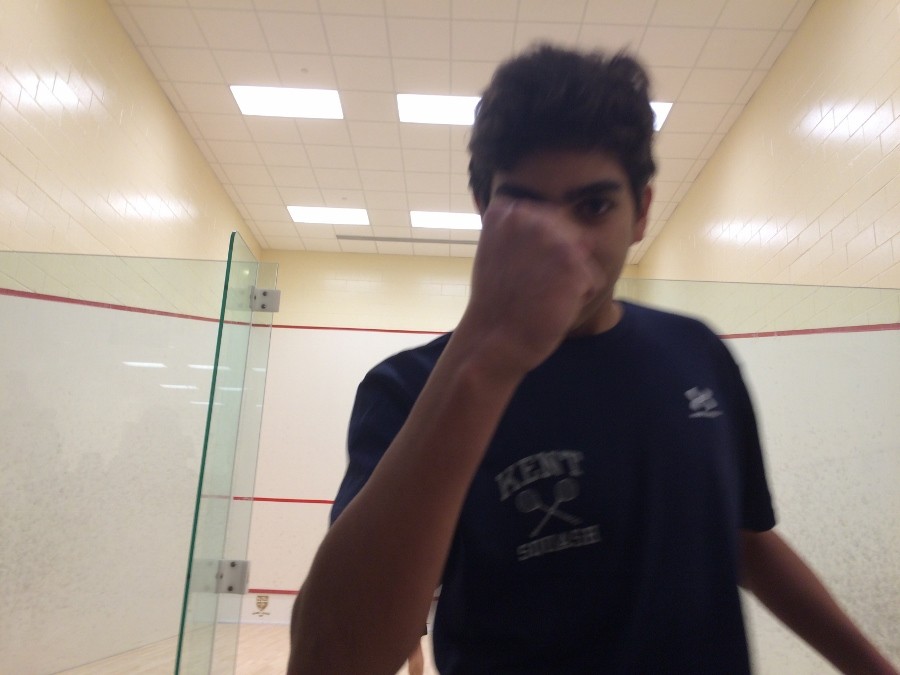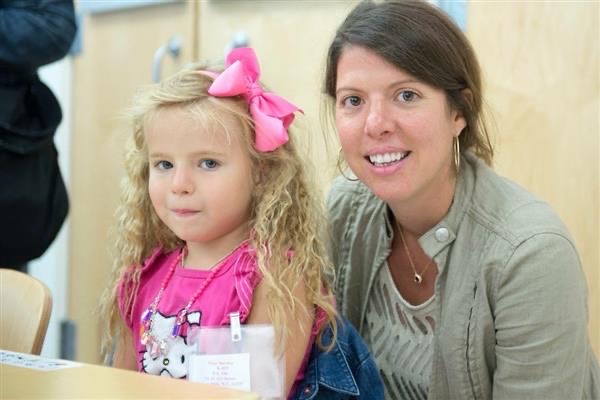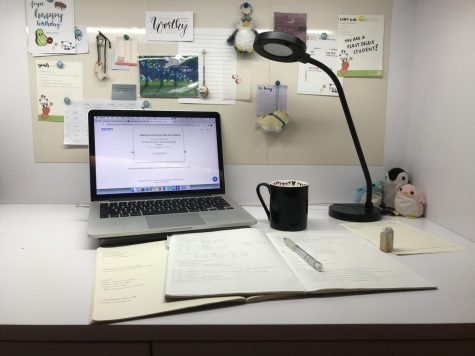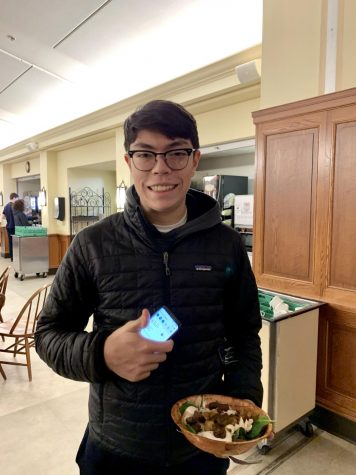Fear and Loathing in Boys Varsity Squash
A Thompson-esque Tribute by Dr. Michael Green
February 14, 2015
The varsity boys squash team spent their winter weekend competing in the US National High School Division III Championships. The Championships in all divisions involved 150 schools, 1400 competitors, and 2300 matches. Kent School sent 7 young men to the tournament. Arranged by rank, they are:
- Abdelrahman ElSergany
- Youssef Fikry
- Omar Attia
- Kentaro Tanaka
- Pete Watcharawasutara
- Boom Jiruppabha
- Paul Steppacher
Our splendorous venues of play were Avon Old Farms and Westminster. About the facilities, one can only gape and mutter like a bumpkin in the big city. On their way to the division III championship match against Gilman School (3-4), Kent defeated Potomac (5-2), Loomis-Chaffee (4-3), and Saint Paul’s (4-3). The plan was to sit back, watch the matches, fire up the blue bus, and get the boys from point A to point B. A bus driver’s life can be a simple life. I even brought a book if I got bored. I needn’t have bothered. Watching our boys play was not just enormously fun, it was an industrial strength emotional thrashing and then some. All schools have trainers. Trainers are good to have for things like cramps, scrapes, and ankle tape but a couple of trauma therapists would have been a nice touch. They were certainly needed.
Squash, like cross country, should be held up as the model for all sport. You will search in vain for its dark side…at least at this level. It is simply the healthiest sports environment around. Positive energy, encouragement, and appreciation of opponents define the culture. Unlike the helmeted traditions that have an uncanny way of bringing out the worst, this culture brings out the best, under enormously stressful conditions. The idea is best conveyed by an excerpt from the US Squash code of conduct,
“Being respectful of one’s opponent and the officials, courteous on and off the court, and responsible for one’s own behavior are the fundamentals of competing in a sportsmanlike manner and upholding the integrity of the sport. Squash requires achieving this, while competing in very close quarters with one’s opponent, often in situations where the players are physically and mentally pushed to the limit, when the difference between winning and losing fairly, is in the hands and control of each player, regardless of the officials involved.”
With players running about in close quarters swinging racquets and generally in one others way, things are bound to get a little hot. Sportsmanship is not developed here. It is not hoped for. Character is not a cynical lure for the desperate and lost. It is fundamental, assumed, and required. One has responsibilities! When players get in each other’s way, they call a Let (do over) and play the point again. Whether they agree or disagree, they just move on. Who makes the call? This is the beautiful part; it’s the players themselves. Players referee and keep score. Players make the calls and there is no appeal. The coaches are only called in as a last resort, as it should be. It gets better. Usually, the players scoring and refereeing are the very players that just competed against one another! The kids who just went to war now sit together to work the next match! I watch them. I’m curious about their relationship. Is it a fragile truce, hostility broiling below the surface? Not even close. Think war buddies. The players appreciate each other … because they know. They know what it’s like to go one on one with no one to blame but oneself. Weakness and strengths are exposed for all to see. There is no hiding behind a helmet and mask (number or no number), no excuses to tap. The win and the loss is owned and the deed is signed by the player. The players share this bond. What’s not to love!
Where are the coaches in all this? I watch Coaches Seye and Siepmann as I watch all the coaches. Naturally, I compare them to the control freaks running the show in other sports. It is a stark comparison. The coaches run the practices, I am sure, but when the game is on, aside from the occasional remark, tweak, or suggestion, the players run the show. If they are in flow, players suffer from the magic deafness that comes with flow. The only information that breaks through is the score and service position. Talking to the players is, at best, talking to one’s self when they are in the heat of battle. All the coach can really do is watch. The chicks have left the nest and they must fly or become ant food. It takes a special breed of coach to surrender that much control. Hats off to them, they are a credit to their species. Being a squash coach is like being a father at the birth of your children; just smile and keep those ice chips coming. Good players don’t like advice and bad players can’t use it. You won’t find that in the coaching manual.
On occasion, you see the opposing coaches talking to each other. I know how competitive Seye and Siepmann are so I appreciate the contrast between the inner and outer self. Before the match begins, coaches shake hands, exchange polite small talk, chit chat about ratings: choreography chaste and civilized. But for those tuned into these things, these are boxers touching gloves. On the outside, they sound like tax lawyers nuancing about deductions. On the inside, it is swords drawn Kabuki madness. Emotions are bottled, bottles are shaken, and openers are not allowed. It can be frustrating but what is a coach to do when trainers are lousy trauma therapists and breakdowns are not encouraged.
On day one, we arrive early with bananas, chew bars, fluids, and talent. We are at Avon and the place is impressive. Apparently Avon thinks sports are important… and it shows. The squash pavilion is magnificent. In addition to their array of regulation courts, they have one glassed in center court for the privileged few. To play on that court, white balls are required against the darker background. The sides and back are ¾” glass. It’s tempting to sprinkle food on them from the mezzanine but here is no time for that now, its game time.
Kent wins its match with Potomac 5-2. Wins were turned in by ElSergany, Youssef, Omar, Boom, and Paul. It has the feel of a warm up match. It was fun to watch Boom dominate his opponent with maturity and athleticism. He won easily in three sets. Paul delivered a 3-1 victory, getting stronger by the point. Although a lot of attention is given to our top three players (“The Egyptians”), to win, at least one of the 4 to 7 rank players must win. When two win, that is a great sign. Kent is looking good.
Asking Youssef about his pre-match routine, he watches for his opponent’s weaknesses and thinks about how he will exploit them. He sees much in these informal volleys and like ElSergany, develops a game plan to suit the opponent. The idea of a game plan sets ElSergany, Youssef, and Omar apart.
There are ways to evaluate player quality. Rankings and ratings are good. The best, however, is to listen to how fellow players react and talk during play. As both ElSergany and Youssef warm up for their matches, I watch their opponents and listen to comment from the safe seats. As it turns out, both of these guys warm up with intimidation in mind. It works. Mice know cats and they know how to survive and thrive in their presence. But when a hawk swoops down, perches, and looks a mouse straight in the eye, all is lost and the mouse knows it. Stepping onto the court with ElSergany and Youssef, opponents’ sense that dreams will be dashed and tickets of destiny will be punched. They will engage the hawk and within approximately 20 minutes become giant pellets of hair, bone, and racquet string. Afterward, the hawk will hydrate. The staff scrambles to remove the unsightly pellet.
When ElSergany and Youssef hit a ball and that ball strikes the wall, it makes a sound that turns heads. Players know that sound and by instinct, head for the shelters. It is less splat and more crack. It would be different if they made that sound by winding up and letting go with all their might but they do it effortlessly. I honestly don’t remember ElSergany or Youssef ever breaking a sweat. On this day, Youssef moves around the court like a fencer, stretching into corners, getting to shots, and generally disheartening his opponent. ElSergany began to lose customers after the first game when the outcome became obvious. When he started jumping and slamming shots into the corner, people came back. The kids laugh about it. They love squash and they obviously love to play it. When it is played exceptionally well, they tend to gravitate .
I did not forget about Omar. Omar has a different look and deadly strategy. Omar looks like he just rolled out of bed. This effect is disarming. “Here is a regular kid, I have a chance.” Too late, the trap is sprung. On this day, Omar was having his way but decided, for purely personal reasons, to let his opponent have the second game. The game was not finished for 5 seconds when ElSergany swoops in, takes Omar by the shoulders, rushes him out of the pavilion, sharing his thoughts with Omar in a tongue that not too subtly implied displeasure. The effect on the crowd was unbelievable. Jaws drop, eyes stare, nervous laughter, mostly shock. As the driver, I felt that it was my duty to put their minds at ease so I shrug and say. “These boys are like brothers, everything is alright.” They sighed and went back to sipping their frappuccinos. When Omar appeared back in the court, he was a dervish of destruction. There was no messing about now; Omar was laying down the law. Skeptics took notes and personal coaching philosophies were rewritten that day. Lions play rough. The victory over Potomac earned the team an appearance in the quarterfinals at Westminster against Loomis-Chaffee. Losing was not an option, in theory. But Loomis had toughened up since their 0-7 loss to Kent earlier in the year and rolling over them did not seem plausible. Sleep and rest were the evening orders. Battle was scheduled for ten the next morning.
Day 2.I have seen Westminster’s squash pavilion before but I had not processed its magnificence. The general arrangement was a square, 2 courts per side, pyramid seating in the center. Grit and Grace, indeed!
Today, the three P’s take center stage: Paul, Pete, and Probability.
Ratings and batting averages exist because they give you a rough sense of probable outcome. Generally speaking, the better you are, the higher your squash rating (2-6). If a 5 is matched with a 3, a match will be over quickly. As the player ratings get closer, players enter the big popcorn popper of fate: chance crashes the party. Players may dismiss the numbers but odds makers know better. The Kent team average is 4.39. The nearest ranking was Saint Paul’s, 4.2. That is a huge difference. If the top three players are removed, the numbers tell a different story. The average rating for the 4-7 rankings for Kent and the other teams are: Kent (3.79), Loomis-Chaffee (3.79), Saint Paul’s (4.0), and Gilman (4.13). Statistically speaking, Kent has roughly 50-50 chance against Loomis and Saint Paul’s for individual matchups. The odds drop, but not significantly (48-52) against Gilman. No one is going to defeat our top three. There is simply no one in the Division III tournament that can challenge them. They will prove themselves to be the champions of their rank without effort. They are money in the bank. If Kent is going to defeat any team, let alone take the national division III championship, one of the 4-7 players must win. If the best of 7 wins, the odds of at least one of the 4-7 players will win is 90 – 95%. The championship is theirs to lose.
At 10:00, the quarterfinal match against Loomis-Chaffee begins. The players play on adjacent courts. On the left, Youssef is busy turning his opponent into a jelly. On the right, Paul jumps to an early lead, dominating his man 11-1 in the first game. Paul comes apart in the next two games, losing a squeaker in the second game but badly in the third. The momentum shift is palpable. In the fourth game, its gut-check time and Paul finds what it takes to win, 11-7. Game 5 here we come. Paul falls behind quickly 2-7 and he is looking discouraged but not resigned. It was then that Paul looked over to Coach Seye, locked eyes, and decided that, “I was not going to let this happen.” Cue the music. Before you know it, the score is 10-10 and a crowd is building. The idea in squash is to beat your opponent to 11, winning by at least 2. It will go something like this: 10-10, 10-11, 11-11,11-12,12-12, 12-13 (C’mon Steppacher, you’re killing me!), 13-13, 14-13, 15-13, game set match goes to Paul! The crowd that had gathered to watch this battle of the 7’s is spastic with whistles and applause, relieved that the awful tension had finally been broken and appreciative of the efforts of Kim and Steppacher. Paul’s win guarantees Kent entry into the semifinal match at 4pm.
The match with Saint Paul’s turns out to be the evil twin of the morning contest. The top three have done their thing and it is time for someone else to step in to seal the deal. While we are waiting for the match to begin, the other Dr. Green is home, going over the rankings and crunching the numbers. I get a text: “It’s up to Pete or Boom. My money’s on Kent.” The code had been broken, the invisible fickle finger of fate points in the general direction of Pete. Pete it is.
Pete takes the first game, loses the second before winning a close third, 11-9. Both players look tired but Pete looks the stronger. The path to the end of the final game is lost to me. I didn’t write it down…on paper. I was too busy texting home the point by point drama that was unfolding before me. Looking back on it, I still can’t believe it. Pete was up by five then tied at 8. From there, it’s all a blur. Why are my hands shaking? My blood sugar is fine thanks to 4 slices of mashed potato pizza (really?). I am texting home the blow by blow and I can barely punch in the numbers. The excitement builds as our hope for Pete could blow at any seam. Finally, Pete goes up 13-12 and half the population of the pavilion is holding its breath. Pete strikes the ball into the corner, low and tricky. The ball bounces twice on the floor and the place erupts, once again, with smiles and applause. Seventeen people have swooned and the trainer is doing her best but what can someone untrained in the trauma of crushing suspense do? Personally, I dared not stand up because my legs were too wobbly. The deal is sealed. Kent moves on to the final match against Gilman on Sunday morning. Everyone leaves emotionally exhausted and will sleep the sleep of the just.
Day 3 arrives and it is time to put it on the line. Kent has never sent a team to this tournament before and here they are, playing in the championship. As usual, the matches among the top three are give aways. Youssef looks as if he is playing an 11 year old and can barely contain his disgust. Omar is in total command of his game. ElSergany is bored. Wanting to play as much squash as he can, he lets his opponent win some points; just enough to make it interesting but no more. With the odds, overall, in our favor the fate of the championship is in the hands of Paul, Pete, Boom, and Kentaro. But it was not to be. No one looked particularly sharp on this morning and losses piled up quickly. By the final match, it was clear that Gilman had the upper hand with no intention of relinquishing it. With the loss of the final point, hands were shaken, and Gilman School took the banner and big cup home.
Losing can be tough and there is a lot to be said for those who lay it gracefully on the line under the pressure of hope. Although the end was a little disappointing, the path was glorious. Statistically we may have been favored but emotionally, we were the under dogs. What do the averages mean to people who are not average? What would ElSergany, Youssef, Omar, Kentaro, Pete, Boom, and Paul say about averages? What would Coach Seye and Coach Siepmann say about their boys and their bottomless pride in them? Does pride go before the fall? Perhaps, but for every valley there are two mountains and one of them stands before this team waiting to be climbed. Pride and love will be their oxygen.







